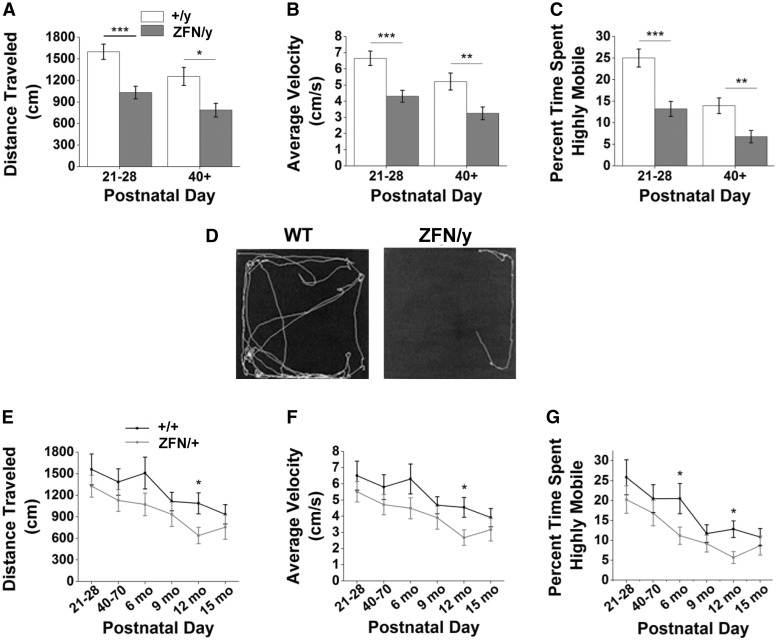Figure 4.
Mecp2ZFN/y and Mecp2ZFN/+ rats display altered locomotion upon open field testing. (A–C) Mecp2ZFN/y males demonstrate a significantly decreased distance travelled (A), average velocity (B), and time spent in a highly mobile state (C) when compared to WTs at both early and late developmental time points (PND 21–28 WT n = 31 Mecp2ZFN/y n = 24; PND 40+ WT n = 21 Mecp2ZFN/y n = 21). (D) Representative tracings of open field movement for PND 40+ WT (left) and Mecp2ZFN/y (right) males. (E–G) Mecp2ZFN/+ females display a significantly decreased distance travelled (E) and average velocity (F) at 12 months of age when compared to WT females, as well as (G) decreased time spent in a highly mobile state at 6 and 12 months of age (PND 21–28 WT n = 11 Mecp2ZFN/+ n = 12; PND 40–70 WT n = 10 Mecp2ZFN/+ n = 10; 6 mo WT n = 11 Mecp2ZFN/+ n = 15; 9 mo WT n = 10 Mecp2ZFN/+ n = 12; 12 mo WT n = 10 Mecp2ZFN/+ n = 10; 15 mo WT n = 10 Mecp2ZFN/+ n = 12). Data are presented as mean ± SE, with asterisks representing significant genotype differences (*P < 0.05, **P < 0.01, ***P < 0.001).

